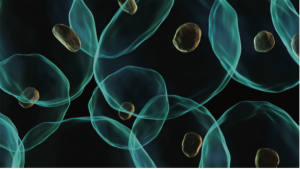
Traditional approaches to toxicity testing have posed multiple challenges for evaluating the safety of industrial and environmental chemicals, pesticides, food additives, food contaminants, and medical products. The challenges include the number of chemicals that need testing, time and resources required for traditional testing, and the unexpected adverse effects that can still occur in clinical trials for drugs despite the extensive toxicological testing.
Over a decade ago, the U.S. Environmental Protection Agency (EPA), the National Institute of Environmental Health Sciences (NIEHS), National Center for Advancing Translational Sciences (NCATS), and Food and Drug Administration (FDA) formed the Tox21 Consortium. Tox21 is a US federal research collaboration focused on driving the evolution of Toxicology in the 21st Century by developing methods to rapidly and efficiently evaluate the safety of commercial chemicals, pesticides, food additives/contaminants, and medical products.
TOX21 MEMORANDUM OF UNDERSTANDING
Since Tox21’s inception in 2008, the collaborative research team has developed and validated in vitro cell-based assays (tests) using quantitative high-throughput screening. The researchers have identified, developed, optimized and screened more than 70 assays. The Tox21 program includes three research phases, structured with guidance from several reports including Toxicology in the 21st Century: The Role of the National Toxicology Program, Toxicity Testing in the 21st Century: A Vision and a Strategy, and The US Federal Tox21 Program: A Strategic and Operational Plan for Coninued Leadership.
Learn more on each agency’s Tox21 site:
Throughout their lives, people are exposed to thousands of chemicals in food, household cleaning products, medicines and the environment. However, scientists know little about the potential for most of these substances to be hazardous to human health (i.e., their toxicity). In fact, more than 30 percent of promising pharmaceuticals have failed in human clinical trials because they are determined to be toxic, despite promising pre-clinical studies in animal models. New methods to assess chemical toxicity have the potential to improve how scientists evaluate environmental chemicals and develop new medicines.
Tox21 is a US federal research collaboration focused on driving the evolution of Toxicology in the 21st Century by developing methods to rapidly and efficiently evaluate the safety of commercial chemicals, pesticides, food additives/contaminants, and medical products. The goals of Tox21 are to (1) identify mechanisms of chemically-induced biological activity; (2) prioritize chemicals for more extensive testing; and (3) develop more relevant and predictive models of in vivo toxicological responses.
The Tox21 Consortium has achieved numerous successes over the years, but many challenges remain. To chart out a path for addressing these challenges, the Tox21 Consortium recently released a new strategic and operational plan (Thomas et al, 2018 ![]() ) that expands the focus of research activities to address key challenges in advancing toxicology testing in the 21st century. The new focus areas include developing an expanded portfolio of alternative test systems that are predictive of human toxicity, addressing technical limitations in in vitro test systems, curating legacy animal (in vivo) toxicity testing data, establishing scientific confidence in the in vitro test systems, and refining alternative methods for characterizing pharmacokinetics and disposition in in vitro assays. Initial research activities under the new strategic vision and operational plan include several cross-partner projects. The cross-partner projects may change over time depending on priorities and research outcomes.
) that expands the focus of research activities to address key challenges in advancing toxicology testing in the 21st century. The new focus areas include developing an expanded portfolio of alternative test systems that are predictive of human toxicity, addressing technical limitations in in vitro test systems, curating legacy animal (in vivo) toxicity testing data, establishing scientific confidence in the in vitro test systems, and refining alternative methods for characterizing pharmacokinetics and disposition in in vitro assays. Initial research activities under the new strategic vision and operational plan include several cross-partner projects. The cross-partner projects may change over time depending on priorities and research outcomes.
LEARN MORE ABOUT THE TOX21 CROSS-PARTNER PROJECTS

Tox21 experts are developing a range of hepatocyte (liver), neuron, endothelial (skin) and cardiomyocyte (heart) cell models — including “disease-in-a-dish” models, 3-D culture methods and multicellular co-culture models, all derived from inducible pluripotent stem cells (iPSCs) — to further characterize hits from primary screening of 10,000 compounds Tox21 10K library). The group uses an iPSC-derived endothelial cell model from the National Heart, Lung and Blood Institute to investigate tobacco lung toxicity through a grant from the Food and Drug Administration and NIH.
Tox21 scientists have developed a high-throughput gene expression platform core facility with the goal of generating data from hundreds of thousands of samples across 1,400 human genes each year. Although the team uses RNAseq technology to analyze all genes in a few samples, evaluating the effects of many compounds at multiple doses and times, each on several cell lines, requires higher throughput. To this end, the group is developing the RASL-Seq technology platform ![]() , which includes approximately 1,400 human gene assays and a streamlined, automated procedure to serve both Tox21 collaborators and NCATS projects. The data analysis team is implementing a pipeline to enable data processing and statistical and systems analyses, which will be useful for RASL-Seq and RNAseq data.
, which includes approximately 1,400 human gene assays and a streamlined, automated procedure to serve both Tox21 collaborators and NCATS projects. The data analysis team is implementing a pipeline to enable data processing and statistical and systems analyses, which will be useful for RASL-Seq and RNAseq data.
LEARN MORE ABOUT HOW TOX21 PROGRAM WORKS
To date, the Tox21 Consortium has been successful generating data on pharmaceuticals and thousands of data poor chemicals, developing a better understanding of the limits and applications of the in vitro methods, and enabling the new data generated to be incorporated into regulatory decisions. Listed below are the Tox21 Accomplishments: